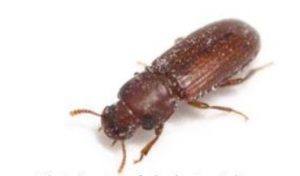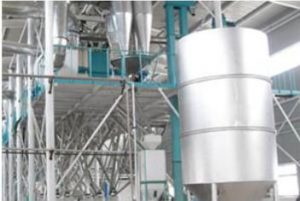Key FSMA Rule to Advance Traceability of Foods
 The FDA has proposed a new rule that lays the foundation for the end-to-end food traceability across the food industry that we’ll be working toward over the next decade as part of the New Era of Smarter Food Safety initiative. When we say traceability, what we are really talking about is the ability to track a food at every step of the supply chain. While limited to certain foods, this proposed rule would create a first-of-its-kind standardized approach to traceability recordkeeping, paving the way for industry to adopt and leverage more digital, tech-enabled traceability systems both in the near term and the future.
The FDA has proposed a new rule that lays the foundation for the end-to-end food traceability across the food industry that we’ll be working toward over the next decade as part of the New Era of Smarter Food Safety initiative. When we say traceability, what we are really talking about is the ability to track a food at every step of the supply chain. While limited to certain foods, this proposed rule would create a first-of-its-kind standardized approach to traceability recordkeeping, paving the way for industry to adopt and leverage more digital, tech-enabled traceability systems both in the near term and the future.
Consumers don’t normally think of food traceability as being a means of preventing foodborne illness, but like many of the improvements in food safety over the years, such as whole genome sequencing, what we are proposing today has a direct impact on preventing foodborne illness.
The approach the FDA has laid out in the proposed rule would allow us to better establish linkages throughout the supply chain during a foodborne illness outbreak investigation and more quickly identify potential sources of contamination and prevent additional illness and death.
For instance, in some past leafy green outbreaks, the FDA has had to call for all romaine lettuce to be removed from the marketplace when the available supply chain information could not pinpoint a specific entity that produced the lettuce linked to the illnesses. With this proposed rule, we’re hoping to avoid situations like this in the future.
For More information Click Here
Submitted by: Rich Gibson, ACE, CFSQA
The Confused Flour Beetle

Order: Coleoptera Family: Tenebrionidae Genus: Tribolium Species: T. Confusum
The confused flour beetle apparently received this name due to confusion over about its identity as it is so similar to the red flour beetle at first glance. This stored product pest is a common insect that attacks stored grains and foods in the pantry. This insect has a worldwide distribution and is very abundant in the United States. It generally feeds on finely ground or broken starch materials, such as flour or meal.
The confused flour beetle is a shiny, flattened, oval, reddish-brown beetle about one-seventh of an inch long. The head and upper parts of the thorax are densely covered with minute punctures. The wing covers are ridged lengthwise and are sparsely punctured between the ridges. The antennae of the confused flour beetle gradually enlarge toward the tip, producing a four-segment club.
The adult beetles are very active and move about rapidly when disturbed. The average life of adults is about one year. Females lay an average of about 450 eggs, which are small and clear white. The eggs are laid loosely on fine materials and broken kernels where the adults reside.
Prevention is the best strategy to avoid insect problems in stored grains. Proper bin sanitation before introduction of new grain minimizes the need for pesticides.
Reference: extension.psu.edu
Submitted by: Rich Gibson, ACE, CFSQA
Bakery Fumigation

A commercial bakery recently shut down for their annual preventative maintenance schedule. Normally, this would include work on the ovens, deep cleaning, and disruptive construction projects. During the second week into the scheduled down time the maintenance team started to work on the day bin and transfer system and found a large number of confused flour beetles. Sanitation and the PCO were called to investigate. At the time of investigation, it was found that the infestation was also inside the main storage silos and incoming flour lines. With some of the sealed systems taken apart the beetles spread to other areas as well. Management discarded the flour in the systems and performed a silo and system cleanout in hopes on stopping the infestation.
After the cleaning was performed a large population of flour beetles remained. The site’s team called for another clean up and consultation for options to eradicate the problem before the facility went back into operation. Due to the level of the infestation and the complexity of the flour system, fumigation with VAP-X would be the most effective option to ensure control.
With a short window, a plan was implemented to take control and return the facility in a 36-hour timeframe. The flour silos, silo room, transfer systems, connected areas, and day bin had to be fumigated with ProFume fumigant. ProFume gas fumigant is a cylinderized gas fumigant labeled to control all life stages of insects and rodents in structures used to store, process and transport most raw and processed commodities. The other related areas were treated with VAP-X a powerful space treatment combined with an Insect Growth Regulator (IGR).
After the treatment was conducted a post treatment inspection yielded additional information. It was noted that the ladder system that was lowered into the silos for cleaning had breaks in the hollow welding that helped contribute to re-infestation. It was also found that cracks in the fluidizer had to be repaired to help reduce harborage. The dead areas of the transfer system had to be cleaned out and added to the MSS.
- The company changed some practices after the fumigation and evaluation was complete.
- Silo cleaning was added to the MSS to twice a year or as needed.
- If activity was found, the cleanout cycle was increased to every 21 days to keep in line with the average life cycle of stored product pests.
- Escalation thresholds were set to include treatment up to fumigation if activity was not corrected with cleaning.
- Product will be reduced to low levels before shutdown and cleaning will be performed as soon as the plant goes down to reduce the time for stored product pest activity to spike. Cleaning will again be performed before production is resumed.
- If insects are found during inbound flour receiving the load will be rejected, the flour removed, and the bins cleaned.






